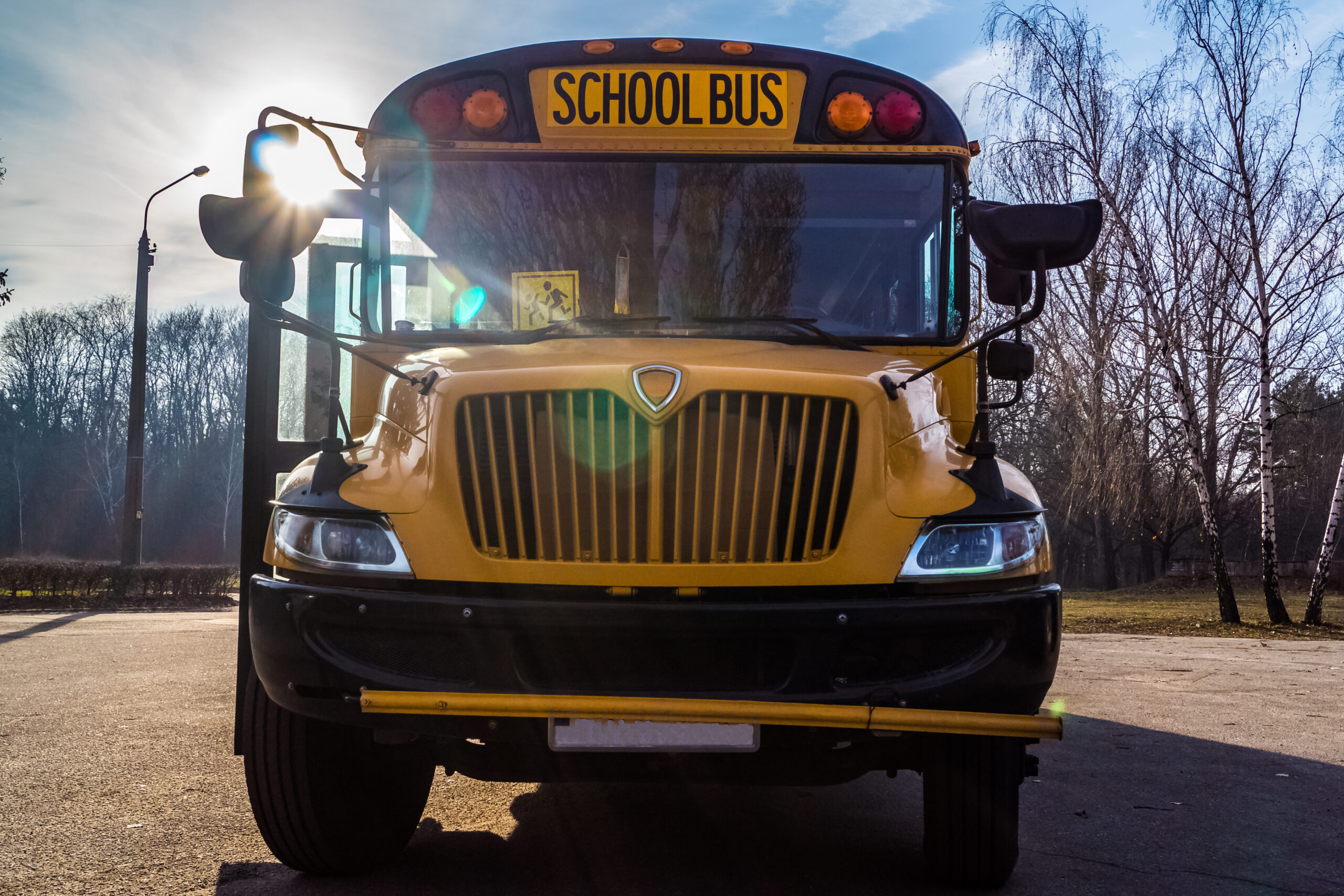
School BUSRide spoke with Chad Carpenter, director of pupil transportation for the state of Alabama, about the most pressing issues in his state; how the Alabama Department of Education responded to 2020’s challenges, and his thoughts regarding the best path forward.

What are the most pressing issues facing student transportation in Alabama?
Driver shortage is always a factor in Alabama. We have noticed that driver shortage seems to have an inverse relationship with the economy. When the economy is doing very well, we tend to struggle with having enough bus drivers in the state. When the economy is not doing well, we have an influx of drivers – because people need jobs. In the state of Alabama, many school systems have a morning route and afternoon route, which allows for contractors and farmers and things like that who can drive a bus morning and afternoon. They can still get the benefits of insurance and things like that while driving a bus, but also able to operate a private business in the meantime as well. So that is certainly an issue.
COVID-19 is certainly a major issue as far as we are concerned. You have schools that are partially virtual, some that are completely virtual, and some that have canceled for a few weeks because of the outbreaks in their area.
Student safety is always an issue. We have very few serious accidents in the bus world, thank goodness. But when you do, sometimes they can be deadly. Always in the loading and unloading process you are trying to make it as safe as possible.
We certify over 16,000 bus drivers across the state every year and recertify them. State law in Alabama requires that. We reiterate those procedures and processes in every one of our classes and have our drivers go through that process every year. We always consider that a pressing issue as well. The Federal Motor Carrier Safety Administration (FMCSA) Clearinghouse has been in effect now for a little over a year, so we are working through that process as well, and getting school systems through it. The entry level driver training is coming up as well, so there are multiple facets that we are always working on regarding student safety.
How is the state working to alleviate those issues?
Our team has researched many different possibilities. One thing we are trying in the state of Alabama, and it has worked for some school systems, is encouraging school systems to hire teachers who already work in the system and get them certified to drive a bus as well. A bus driver works the same days that teachers work because they are delivering students to and from school. That way you have people who already have a rapport with the kids. A lot of times discipline is better because you have people driving the bus who deal with kids every day, who have a college degree and extensive experience in educating students.
Some school systems have implemented that approach. I would say it has worked especially well for smaller city systems because they do not have as many schools. They have kids who live in a smaller geographical area, often making the routes shorter. Logistically it is an issue sometimes because you have to work out class schedules to coincide with bus schedules. That is not always easily done. Which is why sometimes it is easier again in smaller city systems. It does not work for everybody. But for those systems that logistically can work it out, there is a lot of promise.
In Alabama, we are also very fortunate that the salaries for bus drivers are not very, very high, but because they are considered a full-time employee, they benefit from the insurance and the retirement. That really helps the state of Alabama hire qualified people and keep them longevity-wise. It takes 10 years to get vested in the state of Alabama, but that is a real benefit.
Again, if the economy is good and your bus drivers can find a much higher paying job that may also have benefits, it is hard to keep them. They do not have the incentive to stay. But when the economy is not as good and people are struggling to find good paying jobs with benefits, then the job there becomes much more attractive.
How did your state respond to the challenges associated with COVID-19?
Our State Superintendent Dr. Mackey did a great job. He took the lead and decided that as a state, we were going to give a lot of guidance. We were going to research a lot of stuff. We were going to give a lot of suggestions to school systems. Ultimately school systems were given leeway to implement these in manners that would benefit them. In Alabama, we have a myriad of different types of school systems. We have very rural counties that have a small number of students, relatively speaking, that cover a large geographical area. And then you have Birmingham, Montgomery, Huntsville, Mobile, systems that are very large city systems comparatively speaking. Then you have every point in between.
It gave them leeway to implement the new procedures as they saw fit with scheduling. Basically, we put together a state guideline for every aspect of education, not just transportation and suggestions to school systems on things that they should consider. We did not have a whole lot of mandates. Let’s face it, we were putting a large number of kids on a bus that’s 8-feet wide and 40-feet long. There is only so much you can do to social distance. We did things like recommending that hand sanitizer be placed on buses. We suggested that buses be sanitized between every route. We gave school systems leeway to implement those policies as best suited them, providing guidance on how to implement. We did some research. We suggested spacing within the bus, skipping seats, and loading from back to front, and unloading from front to back to minimize kids walking by each other.
Another thing our state superintendent did was give all school systems the option of going partially virtual or completely virtual. We have some school systems that have been totally virtual from day one and we have some that have been a blend of virtual and face-to-face on a Monday/Wednesday, Tuesday/Thursday schedule. Or some were a Monday/Thursday, and the other one was Tuesday/Friday. That certainly helped because it lowered ridership and it allowed us to transport fewer kids on the same number of routes.
Ultimately, we have a vast difference in school systems, and they have all done a wonderful job of taking every feasible, practical precaution and implementing them as best they could, under some very strenuous situations and circumstances. At the state level, we gave them a lot of guidance and suggestions, and we tried to help them in every way, but we did not force a lot of mandates. We allowed them to implement them as they saw fit.
COVID-19 is here. In the state of Alabama, it is predicted that mid-March teachers and bus drivers will receive the vaccine. I think that will make a difference. If we can make it through 2021 with the vaccine that will be a good thing. We are just playing everything by ear.
We have entry level driver training coming first thing in 2022. We are working with the feds on that, making sure we follow everything and giving school systems plenty of guidance. We have a statewide training system that we have implemented and so far, it has worked very well. We have been in contact with Mr. Larry Minor with FMCSA and are continuing to work closely with him on that.
Those are the two biggest issues for us right now. As far as training and statewide meetings, it is difficult finding locations that are large enough for social distancing. I know Zoom format has proven to be effective, but it just is not the same. Our conference has been canceled last year and this year. Still, a lot of unknowns. But we are tackling the issues one at a time, making sure we are continuing to do what we need to for COVID-19, to protect our students and faculty as absolutely best we can.


